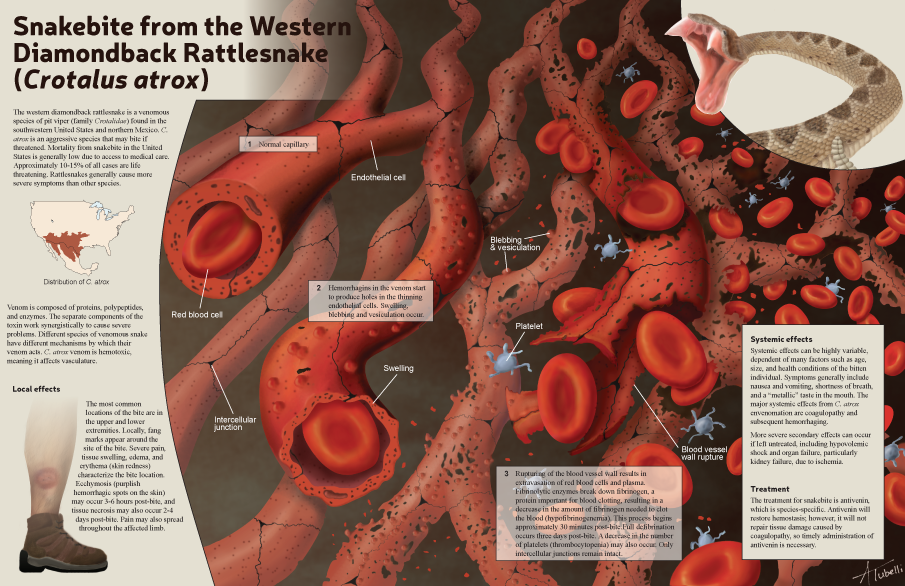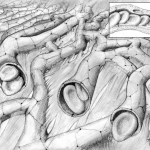
This is an illustration of the pathological manifestation of snakebite specific to the species Crotalus atrox, the Western Diamondback Rattlesnake. The piece highlights local and systemic effects.
1. Araki S, Ishida T, Yamamoto T, Kaji K, Hayashi H. (1993) Induction of apoptosis by hemorrhagic snake venom in vascular endothelial cells. Biochem Biophys Res Commun 190(1): 148-53.
2. Barish RA, and Arnold T. (2013) Snakebites. In Merck manual online. Retrieved from http://www.merckmanuals.com/professional/injuries_poisoning/bites_and_stings/
snakebites.html
3. Burgess JL and Dart RC. (1991) Snake venom coagulopathy: Use and abuse of blood products in the treatment of pit viper envenomation. Ann Emerg Med 20(7): 795-801
4. Eagle H. (1937) The coagulation of blood by snake venoms and its physiologic significance. J Exp Med 65(5): 613–639.
5. Hoffbrand AV and Pettit JE. (1988) Clinical haematology: Sandoz atlas. Gover Medical Pub., 292 pp.
6. Juckett G and Hancox JG. (2002) Venomous Snakebites in the United States: Management Review and Update. Am Fam Physician 65(7): 1367-74.
7. Mackessy SP. (2010) Handbook of Venoms and Toxins of Reptiles. CRC Press, Boca Raton. 528 pp.
8. Ownby CL, Bjarnasson J, Tu, AT. (1978) Hemorrhagic toxins from Rattlesnake (Crotalus atrox) venom. Am J Pathol 93(1): 201–218.
9. Russell FE. (1960) Rattlesnake bites in Southern California. Am J Med Sci 239(1): 51-60.
10. White J. (2005) Snake venoms and coagulopathy. Toxicon 45: 951-967.



